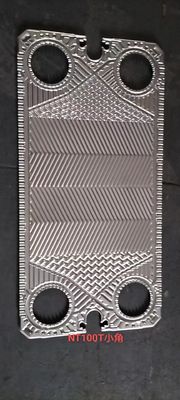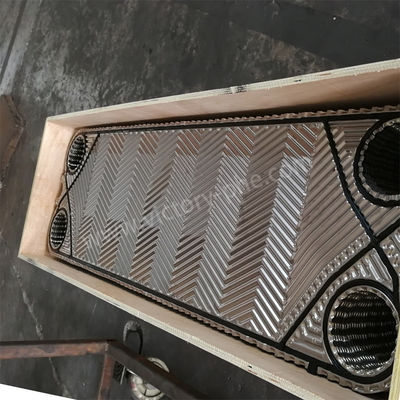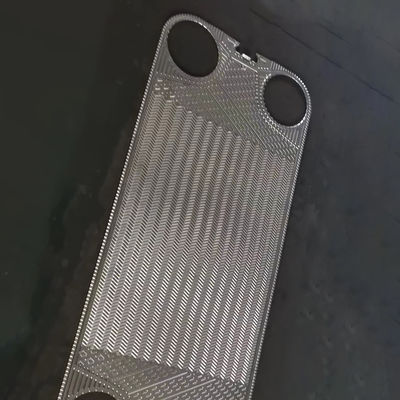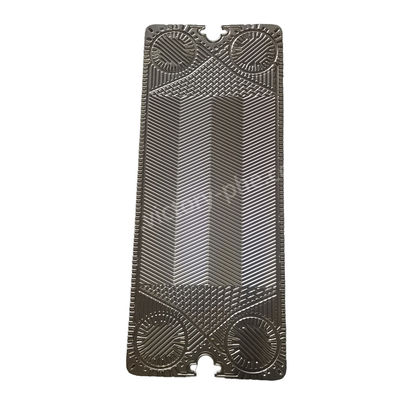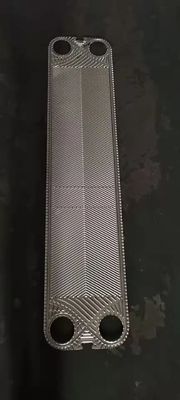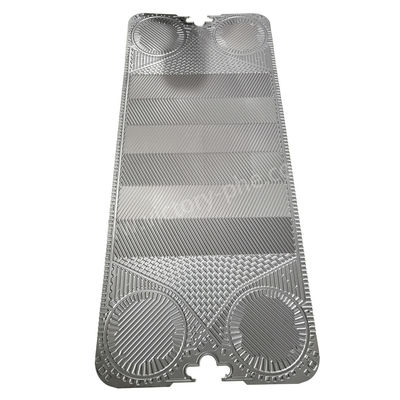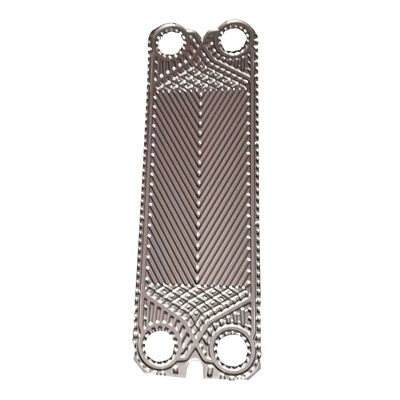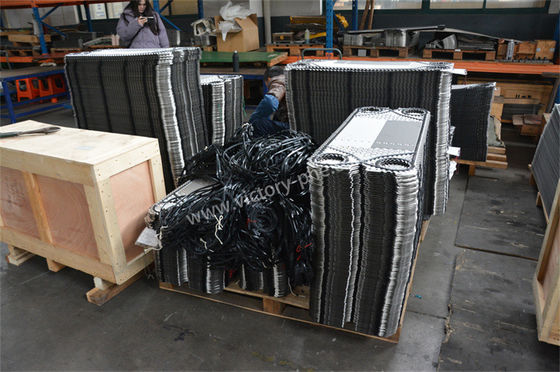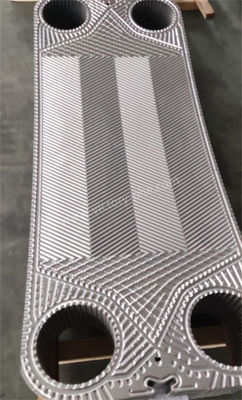Heat Exchanger Plates
0.5mm Thick Titanium Material Vicarb Heating Or Cooling Heat Exchanger Plate
1. Heat exchanger plate is a metal sheet pressed with corrugations, sealing grooves and corner holes, which is an important heat transfer element. Corrugations can enhance heat transfer, increase the strength and rigidity of thin plates, improve the pressure-bearing capacity of the heat exchanger, and promote turbulent flow of fluid on the heat exchange surface, reducing the formation of sediments and dirt.
2. Heat exchanger plates are used in heating, ventilation, and air conditioning systems to transfer heat between the air streams, allowing for efficient temperature control within buildings.
3. Heat exchanger plate is In a heating application, the hot fluid transfers its heat to the colder fluid, raising its temperature. In a cooling application, the cold fluid absorbs heat from the hotter fluid, lowering its temperature.
Heat exchanger plates are commonly used in HVAC systems, refrigeration, and industrial processes for efficient heat transfer between fluids. They offer high heat transfer efficiency, compact size, and the ability to be easily expanded for larger capacity.
| Brand |
Model |
| Vicarb |
V4,V8,VU8,V13,V20,V28,V45,V60 |
| Material |
Specification |
| Stainless Steel |
SUS304 316 316L 310S 904 |
| Titanium and titanium-palladium alloy |
TAi TAi-Pd |
| Hastelloy |
C276 D205 B2G |
| Nickel |
Ni200 Ni201 |
| Molybdenum |
254 |
Heat Exchanger Plates material
1. Stainless steel SUS304 SUS316L
Purified water, river water, food oil, mineral oil
2. Industrial pure titanium and titanium-palladium alloyTi tanium and Pal ladium
Sea water, salt water, salt compounds
3. Hastelloy Alloy
Concentrated sulfuric acid, hydrochloric acid, phosphoric acid
4. Nickel
High temperature and high concentration caustic soda
Applacations
Heat exchanger plates have a wide range of applications in both heating and cooling processes. Some common applications include:
1.HVAC Systems: Heat exchanger plates are used in heating, ventilation, and air conditioning systems to transfer heat between the air streams, allowing for efficient temperature control within buildings.
2.Refrigeration: In refrigeration systems, heat exchanger plates are utilized to remove heat from the refrigerant, enabling the cooling of the system.
3. Industrial Processes: Heat exchanger plates are employed in various industrial processes such as food and beverage processing, chemical manufacturing, and power generation to control temperatures during production and to recover waste heat.
Power Generation: Heat exchanger plates play a crucial role in power plants for cooling turbine condensers and other heat transfer processes.
Q&A
1. Q: Are you a manufacturer or trading company?
A: We are a professional manufacturer of plate heat exchangers, plates, gaskets, plate mould with 18 years' experience.
Q: Can I customize samples of heat exchanger plates?
A: Yes,we welcome sample order to test and check quality.



 Your message must be between 20-3,000 characters!
Your message must be between 20-3,000 characters! Please check your E-mail!
Please check your E-mail!  Your message must be between 20-3,000 characters!
Your message must be between 20-3,000 characters! Please check your E-mail!
Please check your E-mail! 
